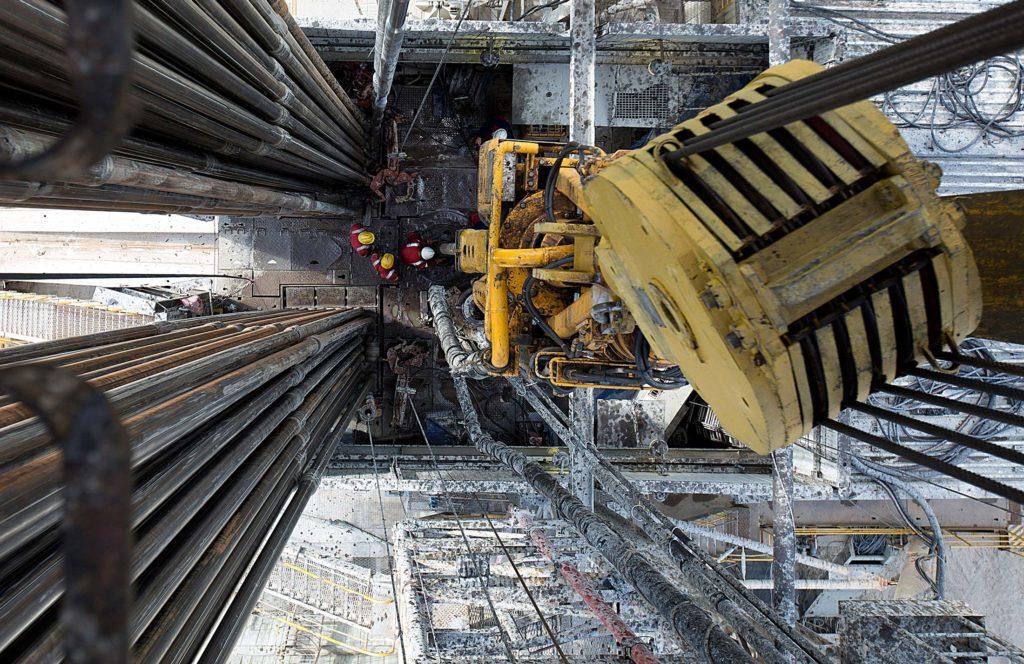
It’s tough to stay positive on crude when the world’s three oil superpowers are likely to increase production.
Hedge funds are the least bullish on rising West Texas Intermediate crude prices in almost seven months as American output keeps breaking records, while Saudi Arabia and Russia signal they’re getting ready to open the taps after more than a year of restraint. Together, the three countries deliver roughly a third of global supplies.
“It’s hard to get really excited in the short-term on the oil price, given that U.S. production is surging, hitting record-highs every week,” said Joseph Bozoyan, a portfolio manager at Manulife Asset Management LLC in Boston. “Hedge funds got really bullish early on in the year and it was sort of a surprise” that Saudi Arabia and Russia discussed increasing output sooner than expected.
OPEC and its allies are meeting later this month after the Saudis and the Russians roiled crude markets with talk of production increases just as their 2016 deal to drain a global glut appears to have achieved its goal. In fact, Russia’s largest oil company is already testing capacity to bring production back.
“If there is a more aggressive demeanor with conversation as far as how they may unwind the current agreement,” you may see investors “get a little bit more skittish just because you have more oil coming onto the market at the same time that the U.S. has ramped up production,” said Mark Watkins, who helps oversee $151 billion at U.S. Bank Wealth Management.
Saudi Arabia and other producers held an unofficial meeting on Saturday in Kuwait City, where they stressed the need to stimulate adequate investments to ensure stable oil supply.
Weighing on OPEC’s decision is mounting global outcry against steep fuel prices on the back of higher crude futures. While U.S. President Donald Trump has said crude prices are “artificially Very High” and India faces calls for price caps on gasoline and diesel, a truckers strike over surging fuel costs in Brazil culminated with the resignation of the state oil company’s CEO on Friday.
Hedge funds reduced their WTI net-long position — the difference between bets on a price increase and wagers on a drop — by 14 percent to 324,235 futures and options during the week ended May 29, according to the U.S. Commodity Futures Trading Commission. Longs slid 10 percent, while shorts jumped 29 percent to the highest level since November. Total positioning on WTI is the lowest since last July.
Meanwhile in the U.S., bottlenecks in key shale plays such as the Permian Basin are keeping record-breaking levels of output trapped. ConocoPhillips, the world’s biggest independent oil explorer, even suggested it may shift some spending away from the area until its transport issues are resolved. On top of that, U.S. government data hasn’t shown the usual sweep of crude inventory declines that’s typical of the key gasoline-making season.
“If you’re going to take a long position here, you have to be betting on inventory draws and no political action designed to lower crude prices,” said Bill O’Grady, chief market strategist at Confluence Investment Management in St. Louis. In the U.S., “as the technology improves, you run the risk of driving down that break-even price. Now OPEC is facing the problem, if we really want to choke off American production, how low does the price have to go?’
OTHER POSITIONS:
The Brent net-long position fell 9.9 percent to 451,996 contracts, the lowest level since September 2017, weekly ICE Futures Europe data on futures and options show. In the fuel market, money managers decreased their net-long position on benchmark U.S. gasoline by 10 percent, while the net-bullish position on diesel slipped 0.1 percent.